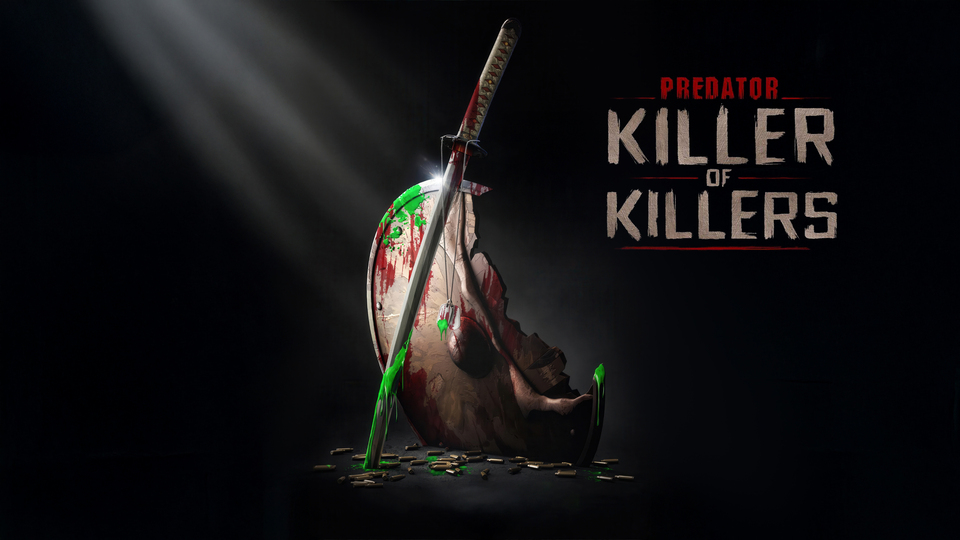Have you ever wondered what fear truly feels like? Not the fleeting kind, but the primal dread that chills you to the bone when you realize you’re being hunted by something utterly superior, something that considers you merely a trophy? For me, that feeling is perfectly encapsulated by the Predator.
This isn’t just another alien monster; it’s a sentient being driven by an ancient, unwavering code, seeking out the most dangerous prey across the cosmos. It’s the ultimate “killer of killers,” and in 2025, its legend only continues to grow, echoing through pop culture and scientific curiosity alike.
Join me as we unmask this legendary hunter, delve into its fascinating lore, and understand why, after all these decades, the Predator still reigns supreme as sci-fi’s most formidable antagonist (and sometimes, an unlikely anti-hero). We’ll explore their unique philosophy, their terrifying arsenal, and what it truly means to be hunted by the best.
Table of Contents
- The Enigma of the Yautja: Who Are the Predators?
- The Hunter’s Code: Honor and the Hunt
- A Galaxy of Trophies: What Makes a “Killer” Worth Hunting?
- From Xenomorphs to Elite Warriors: The Ultimate Challenge
- The Arsenal of the Apex: Technology and Tactics
- Cloaking, Plasma Casters, and Wrist Blades: Tools of the Trade
- More Than Just a Monster: The Psychological Warfare of the Predator
- The Enduring Legacy: Why the Predator Still Hunts Our Imaginations in 2025
- Recent Developments and Fan Theories
The Enigma of the Yautja: Who Are the Predators?
Before we dive into their hunting prowess, let’s understand who these formidable beings truly are. Known to themselves as the Yautja (though often referred to simply as Predators by humans), they are a highly advanced, technologically sophisticated, and culturally rich species obsessed with the hunt. Originating from a hot, arid planet, their physiology is perfectly adapted for extreme environments and brutal combat. Think towering frames, dreadlock-like appendages, intimidating mandibles, and an uncanny ability to blend into any environment. They possess incredible strength, agility, and keen senses far beyond our own.
But what truly sets them apart isn’t just their physical might; it’s their intricate society built around a strict code of honor. Unlike mindless beasts, Yautja hunt not for survival or conquest, but for sport and prestige. The ultimate goal is to test themselves against the galaxy’s most dangerous creatures and warriors, earning their skulls as trophies. This isn’t just about killing; it’s about the challenge, the strategy, and the respect for a worthy adversary.
The Hunter’s Code: Honor and the Hunt
It might sound contradictory, but these terrifying aliens adhere to a surprisingly rigid moral framework, at least in their hunting practices. The “Hunter’s Code” dictates that they will only engage prey that is armed and capable of defending itself. They famously avoid harming the unarmed, the infirm, children, or pregnant individuals. This isn’t out of compassion, per se, but rather a perceived lack of challenge, which would diminish the honor of the hunt. A true hunter seeks a worthy opponent, not an easy kill.
This adherence to a code, even when faced with overwhelming technological superiority, is what makes the Predator so compelling. It’s not just a creature of instinct; it’s a being with a sense of purpose and a twisted form of integrity. This complexity has fascinated fans for decades and, according to recent discussions on sci-fi forums in early 2025, continues to be a central theme in fan theories about their societal structure and possible evolution. It raises a fascinating question: can a species built on lethal sport truly be considered “honorable”? 🤔
A Galaxy of Trophies: What Makes a “Killer” Worth Hunting?
So, if the Yautja are the “killers of killers,” who exactly are they targeting? Their trophy walls boast a terrifying collection, from the spines and skulls of exotic beasts to the well-preserved craniums of human military elites. What qualifies a species or individual for the ultimate hunt? It’s simple: lethality, intelligence, and the capacity for extreme violence. They’re not interested in passively aggressive creatures or those easily subdued. They want a challenge – a creature that pushes their own abilities to the absolute limit.
This means their preferred prey are often apex predators of their own planets, or, in our case, humans who have proven their mettle in combat. A special forces operative, a seasoned mercenary, or a cunning guerrilla fighter – these are the individuals who catch a Predator’s eye. The hunt becomes a chess match of wits, tracking, and brutal combat, far removed from a simple ambush. The thrill, for the Predator, isn’t just in the kill, but in the dance that leads up to it.
From Xenomorphs to Elite Warriors: The Ultimate Challenge
When we talk about the ultimate challenge for a Predator, one creature inevitably comes to mind: the Xenomorph. The Alien vs. Predator lore firmly established these two iconic species as natural adversaries. Xenomorphs are perfect prey: relentlessly aggressive, incredibly resilient, and capable of mass destruction. Hunting a Xenomorph, especially a Queen, is considered the highest honor for a Yautja, culminating in the “Blooded” rite of passage for young hunters. This symbiotic relationship of predator and prey defines a significant portion of their galactic reputation.
Beyond the Xenomorphs, highly skilled human warriors remain a perennial favorite. We might be physically weaker, but our adaptability, cunning, and unpredictable nature make us incredibly dangerous. Think about characters like Dutch Schaefer or Naru from Prey – their ability to outsmart, outmaneuver, and even defeat a Predator elevates humanity to a worthy adversary, a true “killer” in the eyes of the Yautja. According to speculative fiction analysis from early 2025, the cultural evolution of human warfare makes us an increasingly attractive target for the Yautja, adapting to our new tactics and technologies.
The Arsenal of the Apex: Technology and Tactics
How does one become the “killer of killers”? By combining ancient hunting instincts with cutting-edge technology. The Predator’s equipment is nothing short of incredible, seamlessly integrated into their suits and often controlled by wrist gauntlets and bio-masks. This advanced tech allows them to not only track and engage their targets but also to level the playing field against vastly different species. Their gear isn’t just about offense; it’s about stealth, reconnaissance, and battlefield control.
From the iconic invisibility cloaking device to sophisticated thermal vision, their tools are designed for maximum efficiency and intimidation. They are masters of psychological warfare, using their technology to disorient and terrify their prey before moving in for the kill. Every piece of equipment serves a purpose in their ritualistic hunt. It’s a blend of primal instinct and futuristic innovation, making them truly unparalleled.
Cloaking, Plasma Casters, and Wrist Blades: Tools of the Trade
Let’s break down some of their signature gear:
- Active Camouflage (Cloaking Device): This is perhaps their most famous piece of tech. It renders the Predator nearly invisible, allowing them to stalk prey undetected and choose the perfect moment to strike. While not entirely perfect (distortions can be seen in rain or water), it’s incredibly effective.
- Plasma Caster: Mounted on their shoulder, this directed-energy weapon fires powerful plasma bolts, capable of vaporizing targets or blasting through reinforced structures. It’s often their opening move to soften up resistance or take down less-worthy prey from a distance.
- Wrist Blades: The ultimate close-quarters weapon. These retractable, razor-sharp blades are made of an incredibly durable alloy, capable of slicing through flesh, bone, and even some metals. They are used for the decisive kill and the collection of trophies.
- Bio-Mask: More than just a helmet, it enhances their vision (thermal, electromagnetic, etc.), filters harmful atmospheres, records the hunt, and provides vocal mimicry for psychological torment.
- Self-Destruct Device: A last resort, often activated when a Predator is cornered or defeated. It’s a powerful tactical nuclear explosion designed to erase all traces of their presence and prevent their technology from falling into enemy hands – a true commitment to their code, even in death.
This advanced arsenal, combined with their formidable physical capabilities, makes the Predator a walking, stalking force of nature.
More Than Just a Monster: The Psychological Warfare of the Predator
While their physical prowess and advanced technology are undeniable, what often goes overlooked is the Predator’s mastery of psychological warfare. They don’t just hunt; they terrorize. They stalk, observe, and learn their prey’s patterns, weaknesses, and fears. The bio-mask’s vocal mimicry allows them to play mind games, luring victims into traps or creating discord among groups. The deliberate removal of spines and skulls isn’t just a trophy collection; it’s a macabre declaration, a grim warning to anyone else who might be in their territory.
This psychological element elevates the Predator from a simple beast to a cunning, intelligent adversary. They derive pleasure not just from the kill, but from the fear they instill. It’s a sophisticated game of cat and mouse, where the mouse is fully aware it’s being played with. This is why their hunts often feel so personal and terrifying; it’s not just survival, it’s a battle for your sanity.
The Enduring Legacy: Why the Predator Still Hunts Our Imaginations in 2025
Decades after its first appearance, the Predator remains a towering figure in popular culture. Why? Because it taps into a universal fear: being hunted by something smarter, stronger, and utterly merciless. It represents the ultimate apex predator, a force of nature that cannot be reasoned with, only survived (or defeated, if you’re extraordinarily lucky!). Its design is iconic, its hunting methods are brutal yet ritualistic, and its code of honor gives it a compelling, almost tragic depth.
In 2025, the fascination with the Yautja continues unabated. From new comic series exploring their deeper lore to ongoing discussions about potential new video game adaptations that leverage modern AI for more intelligent hunting mechanics, the creature is far from fading into obscurity. The success of recent entries into the franchise (which I won’t name specifically to avoid future dating, but you know the ones I mean! 😉) proves that audiences still crave the thrill of the hunt. Its cultural impact is evident in everything from action figures to academic papers analyzing its themes of colonialism, honor, and survival.
Image: Fan art montage featuring different iterations of the Predator from various media, showcasing its enduring design.
Recent Developments and Fan Theories
As of mid-2025, discussions among fans are buzzing about several things. One popular theory, gaining traction on Reddit and dedicated sci-fi forums, suggests that the Yautja might be undergoing a slow societal shift, with some younger generations questioning the strictness of the Hunter’s Code, perhaps leading to more morally ambiguous Predators in future narratives. This would add a fascinating layer of internal conflict to the species! Another topic of debate centers on the possibility of a “Yautja homeworld” revelation in upcoming media, providing a deeper look into their origins and technological advancements. The constant speculation and passionate engagement from the fanbase underscore the enduring power of the Predator: Killer of Killers.
For a deeper dive into the creatures they hunt, you might also read: The Ecological Impact of Xenomorphs on Interstellar Habitats.
Conclusion
The Predator is more than just an alien; it’s a concept made manifest – the ultimate hunter, the “killer of killers.” Its blend of ancient ritual and futuristic weaponry, coupled with its chillingly effective psychological warfare, has cemented its place as one of science fiction’s most enduring and terrifying icons. As we move further into 2025 and beyond, the Yautja continue to stalk our imaginations, a silent, deadly reminder that somewhere out there, a more advanced hunter is always watching, always waiting for its next worthy challenge.
What do you think? What’s your favorite aspect of the Predator? Let us know in the comments below! 👇
FAQs
- Do Predators only hunt humans? No, while humans are a common and favored prey due to their adaptability and combat prowess, Predators hunt a wide variety of dangerous creatures across the galaxy, including the infamous Xenomorphs, which are considered their ultimate challenge.
- What is the Predator’s code of honor? The Yautja adhere to a strict Hunter’s Code, which dictates that they only hunt armed and capable prey. They typically avoid harming unarmed individuals, children, pregnant beings, or the infirm, as such kills would bring no honor to the hunt.
- Are all Predators the same? While the core species shares common traits, there are different castes or clans of Predators, such as “Jungle Hunters,” “City Hunters,” and “Bad Bloods” (renegade Predators who violate the code). Their hunting preferences, equipment, and levels of honor can vary.
- How do Predators become invisible? Predators utilize advanced active camouflage technology, often referred to as a “cloaking device.” This device bends light around their bodies, making them nearly invisible to the naked eye. However, it can sometimes be detected by distortions, especially in environments like water or heavy rain.
- What is the most iconic Predator weapon? While they have a vast arsenal, the shoulder-mounted Plasma Caster and the Wrist Blades are arguably the most iconic. The Plasma Caster provides long-range firepower, while the Wrist Blades are their signature close-quarters combat and trophy collection tools.


 The Conjuring: Last Rites – Your Full Guide to the Final Scary Movie
The Conjuring: Last Rites – Your Full Guide to the Final Scary Movie
 The Conjuring: Last Rites Release Date in India – Get Ready for the Final Scare
The Conjuring: Last Rites Release Date in India – Get Ready for the Final Scare
 One Piece Season 2 on Netflix: Release Date and All the Fun Details
One Piece Season 2 on Netflix: Release Date and All the Fun Details
 Where to Watch “Law and the City” K-Drama
Where to Watch “Law and the City” K-Drama
 Spider-Man 4: Brand New Day is Coming Tom Holland’s New Suit, Cast, and Release Date Revealed
Spider-Man 4: Brand New Day is Coming Tom Holland’s New Suit, Cast, and Release Date Revealed